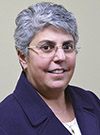Who you gonna love?
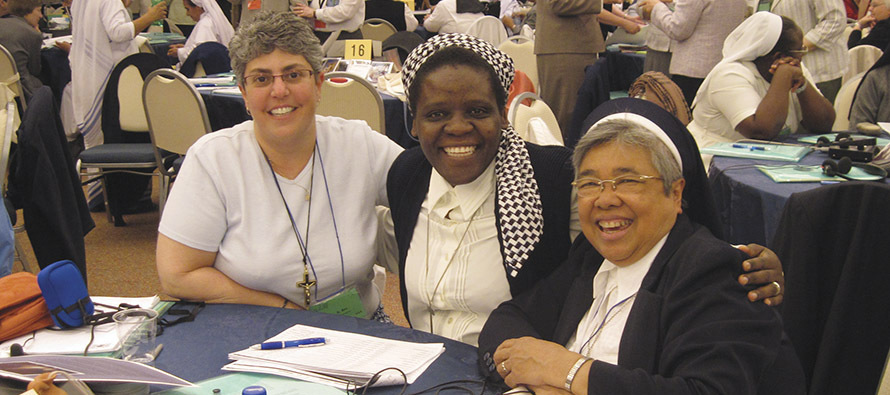
Sister Mary Pellegrino, C.S.J. with other sisters attending the International Union of Superiors General Plenary in 2013 in Rome. (Photos courtesy of the Sisters of St. Joseph, Baden, PA.)
IT WAS A MAY-SEPTEMBER ROMANCE, and I was never again the same. I met David in the spring of ’92 while he was staying with an acquaintance of mine, and somehow I ended up showing him around the city one day. We seemed to hit it off. I certainly enjoyed his company, and he seemed to enjoy mine. We ended up spending lots of evenings together, and on the weekends we tried to do the same. Then one night when we were saying good-bye, the kiss of friendship turned into something much more.
From then on the summer was a blur. I aced the graduate classes I was taking and seemed to get by on about three hours of sleep a night. That’s what being in love can do. It was a remarkable time in my life. I felt as though I had the whole world at my fingertips. I was daydreaming about what my life might be like . . . what our life together might be like. I was nervous and fearful and excited and energized all at the same time. And, oh yeah, I was vowed to a celibate life.
OK, so that could present a problem. During the summer of ’92 I was in my fourth year of temporary profession with the Sisters of St. Joseph of Baden, Pennsylvania. I had entered my congregation six years earlier. I had done my share of dating before I entered, and I embraced celibacy with all the wonder, zeal, and starry eyes that any 22-year-old could have.
In my religious life prior to meeting David, I had found myself attracted to other men, but nothing like what I felt this time. Before David, my community life and my ministry were far more important to me than anyone I had been attracted to. But this time I wasn’t so sure.
Oh, we talked about it. We talked about all sorts of things. We talked about how we would stay in touch after he went home and how we might visit one another, and we conveniently talked around the fact that I was committed, at least temporarily, to a life that precluded the kind of relationship that we were forging.
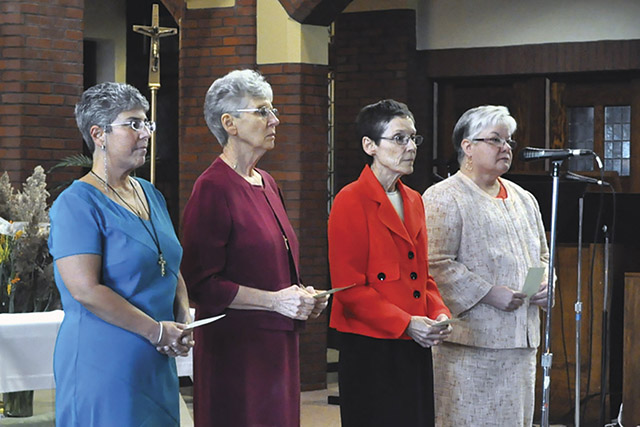
A question of clarity
Toward the end of the summer, as my classes drew to a close and my vow renewal loomed large ahead of me, I had a profound experience of God’s presence that crystallized the whole situation for me. I was preparing for a final presentation in one of my classes, and not surprisingly I was completely unfocused. My mind kept wandering to the decision before me—renew my vows or withdraw from my formation process.
I begged God for one thing only: clarity. And I received one thing only: a question. It instantly cut through the confusion in my mind and heart, and I remember sitting straight up in my chair as though a burst of electricity had ridden its current right through me. The question was: How do I want to be in relationship?
I waited for the direct object—with David? with my community? with what? with whom?—But that part never came. Just that question remained: How do I want to be in relationship?
After a moment I knew that that was the question that I needed to discern. I still had no idea what I was going to do and my renewal date was less than three weeks away. I went on retreat, which had been scheduled months prior, with not a small bit of resistance. As luck would have it, my retreat director knew a little bit about love herself.
I was open and honest and frank with her and she was open and honest and frank with me. I told her of the question that had stunned me nearly into a stupor, and I’m pretty sure that I did my share of whining about how hard this was and why God would not desire something that was obviously so good for me. I don’t remember a lot of what my retreat director said those days, except that she kept asking me if I had come up with an answer to the question: How do I want to be in relationship?
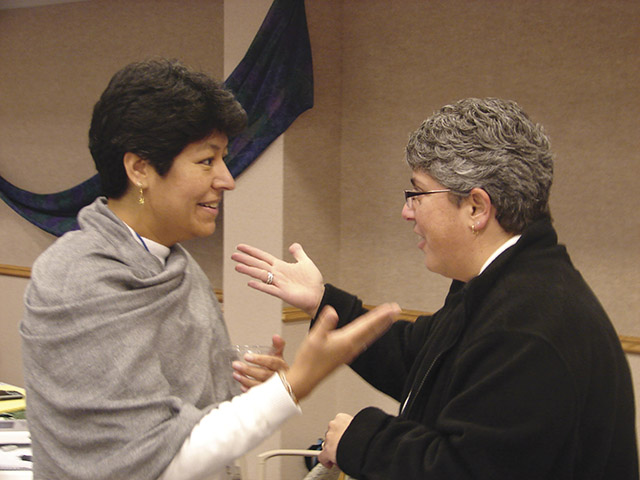
All the while I had been thinking of David and me together, but near the end of the retreat I sensed the real meaning of that question and found the grace to answer it honestly. The question wasn’t about David and me, although the immediate situation was. The question was basically about me, about the manner in which I wanted to be in relationship . . . with everyone and everything. The question wasn’t about whether I should withdraw from my formation process and pursue a relationship with David or with anyone else; it was about how I was made to love and how I loved best.
I knew then that I would renew my vows. I knew then what I had known somewhere in the deepest part of myself all along: that I was made to love celibately. I was made to be in relationship as a celibate lover with the world that God created. I don’t know why I was made that way, but I do know that I was.
I saw David one more time after I renewed my vows, but later I had to tell him that I just couldn’t do it anymore. I just couldn’t live wholeheartedly the life that was mine and keep wondering how to build this other relationship. I cried. He cried. But in the end he respected and honored my decision. We parted as friends with the promise to stay in touch. Our efforts faded away after a time as those things often do. I think of David every now and then with gratitude and affection.
And I think of that time in my life frequently with even more gratitude and affection.
It was then that I really began learning and living what celibate love is about. I’ve found that celibate love is a mystery. Next to the Paschal Mystery, it is perhaps the mystery of my life, and, I suspect, of the lives of many other celibate lovers.
For years I’d heard celibacy defined as the absence of marriage, and by extension the absence of sex. That’s all well and good, but definitions weren’t helpful to me during the summer of ’92. Nor did it help to consider one of my life’s most meaningful and distinguishing characteristics as an absence of something.
Since then I have recognized that some of the deepest meaning that my life holds is because of the presence of celibate love, not because of the absence of marriage. Since then I have come to know and to understand that while celibate love differs from the love shared by spouses, it is no less a sexual expression than the genital lovemaking that is part of marriage.
Healthy celibate lovers don’t leave our sexuality at the door when we enter communities. We never cease being sexual beings. We take our sexuality with us and freely embody its creative energy in ways that are life-giving, passionate, and loving. Is it always easy? No. Is this aspect of our lives often misunderstood? Definitely.
Many adults maintain a chaste, celibate lifestyle for years at a time—both voluntarily and involuntarily. Celibacy, then, is not super-human and in fact is relatively common, if temporary, for many individuals.
A vow of celibate chastity is different, however. Rooted in centuries of spiritual teaching, the vow of chastity is meant to help keep one’s focus singularly on God and community. The vow makes religious community life possible and sustainable.
Among the many tasks in discerning a call to religious life or priesthood, vocation directors say that those in discernment must reflect carefully to assess whether they are called to lifelong celibacy (alongside lifelong vows of obedience and poverty and perhaps others). All the vows, including chastity, are a response to a call from God. They are lived within the context of community, and they are not meant to be accepted simply because they are required. The life in which celibacy is professed is not a life of negation but of commitment, human fulfillment, freedom, and promise. The vow of chastity is intended to give witness to hope and be a profound way of loving.
For those discerning religious life, the questions might be framed as: Where is God leading me? Can I thrive in a life of poverty, chastity, and community living? Can I be happy and fulfilled committed to a community rather than a spouse? Or, as VISION writer Sister Mary Pellegrino, C.S.J. puts it: How do I want to be in relationship?
It is not so much a question of, “Do I love God enough to give up everything?” or “Can I live my life with a laser-focus on God’s mission?” Those are questions all Christians hope to answer with a “yes.” The question in regard to religious life is: Are the vows, including the vow of celibate chastity, a healthy and wholesome way of life for me to develop into a mature, free, committed Christian?
—Vision editors
Available for love
When all the world around us seems to be paired off in couples or seeking partners, celibate loving can appear inept, misguided, and even a cop-out. But for those of us to whom this life is given and who embrace it healthily and honestly, no amount of justification is needed because it’s about our essence.
Celibate chastity, like all the vows, is more about interior disposition than about any behavior or absence of that behavior. And it seems to me that the primary interior disposition for love is availability. But to whom and for what? Married lovers are available to and for one another in a manner in which they are not available to any other person. Their love for God is expressed in and through their marital commitment. That’s the primary locus of their love, the emotional center of their lives. Celibate lovers in religious communities, along with their sisters and brothers, are available to and for the mission of their congregations. Their love for God is expressed through their religious commitment, and that’s the primary locus of their love and the emotional center of their lives.
So what does all that mean? For me it means that I’m available for intimate relationships but not exclusive ones marked by genital sexual expression. It means that I seek friendships and relationships that honor who I am and the commitments that I’ve made. It means that I surround myself with people—both in and outside of my community—with whom I can share honestly and deeply about my life and receive the same from them. It means that I am free from the rights and responsibilities of marriage and family life, and I take up the rights and responsibilities of a vowed life in religious community.
It took me a long time to grow into the awareness that celibate loving is a gift. As with any gift, it’s up to us to decide if and how we’ll receive it. As with some gifts that don’t seem to fit, we sometimes need time to grow into it.
I don’t know any sister, brother or priest who has ever set out from the beginning to make the celibate choice. And I don’t know any successfully married couple who has ever set out from the beginning just to have sex. Celibacy alone does not make religious life and sex alone does not make a marriage. Neither can be truly reflected by a caricature or a single experience.
Neither authentic celibate love nor authentic married love happens overnight. We grow into each of these loves each day through the choices that we make and those that we don’t, through the manner in which we relate to ourselves and others and God, and through our attentiveness to what’s going on inside of us as we negotiate the complexities of life and love.
I have found that while celibate love contours and shapes my religious life, it is not the whole of it. For me celibate love makes sense only in the larger context of a life marked for and by profound availability to respond to the urgent promptings of God toward the care of all of creation. Celibate loving frees me to respond to that urgency. Communal living provides companions along the way.
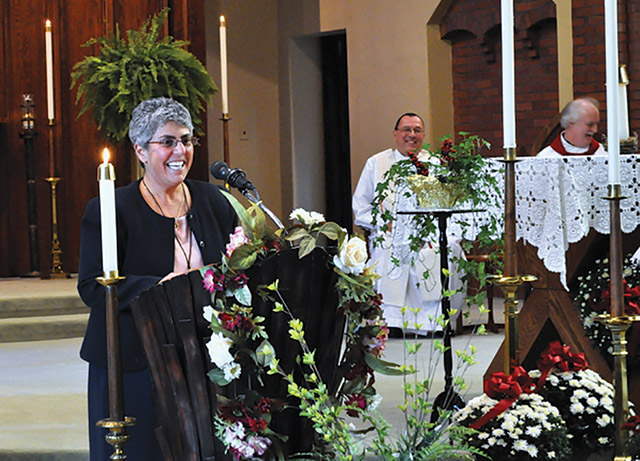
I don’t know why, but I’m fulfilled in this life and that alone is Mystery to me.
Who I’ve become
When I dated in college I didn’t win any prizes for Most Attentive Girlfriend. The time, energy, and attention that is needed to explore and build a lasting, exclusive relationship felt limiting and confining to me. When I began experiencing myself in community and in ministry I felt as though my love, passion, and energy had found its center and focus.
That was a significant memory for me in the months following the summer of ’92 as I began to unwrap the gift of celibate love in my life. Since then I’ve continued to unwrap it. At times I’ve done it well and at other times I’ve done it awkwardly. I may have even made a mistake or two. But in the end it is celibate loving that gives shape and contour to the way in which I live and love.
In 1993 I professed perpetual vows in my congregation. I am committed permanently to a life of celibate loving as a Sister of St. Joseph of Baden. That commitment defines my life. It shapes my days and frames my nights. It is the context for all of my choices. It is the starting point of every relationship that I have. It is who I am. It is who I’ve become. And it is who I’m becoming more and more each day.
A version of this article originally appeared in VISION 2005.
Related article: VocationNetwork.org, “But what if you fall in love?”
Tags
Related
- Questions you’ll be glad you asked
- What monastic mystics got right about life
- Religious communities embrace diverse members
- How my parents responded when I became a brother
- Vocation Basics: You are already called—Message to youth from Pope Francis
- Meet the parents
- Charism: The gift that shapes lives
- What our vows mean
- Discover five treasures of religious life
- Religious making a difference Read More
Most Viewed
- Find your spirituality type quiz
- Questions and answers about religious vocations
- Celibacy quiz: Could I be a nun? Could I be a brother? Could I be a priest?
- Resources for older discerners or those with physical and developmental differences
- About Vocation Network and VISION Guide


